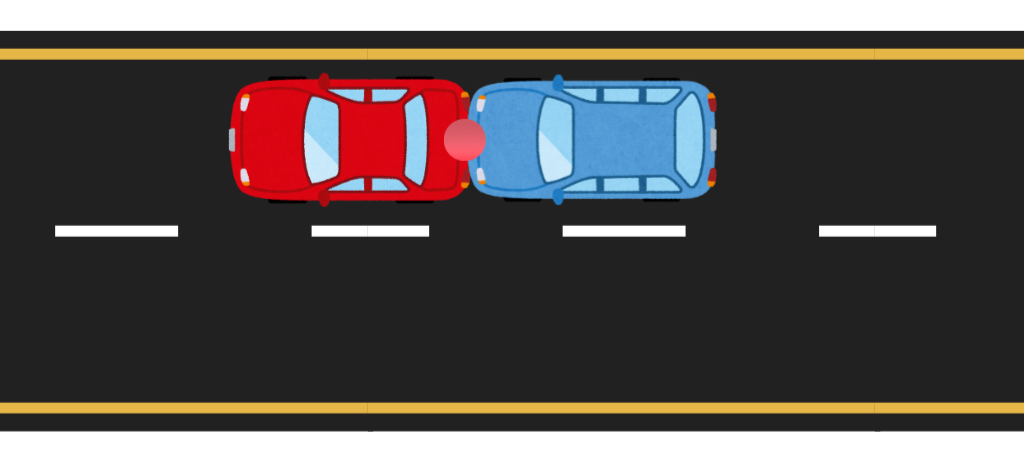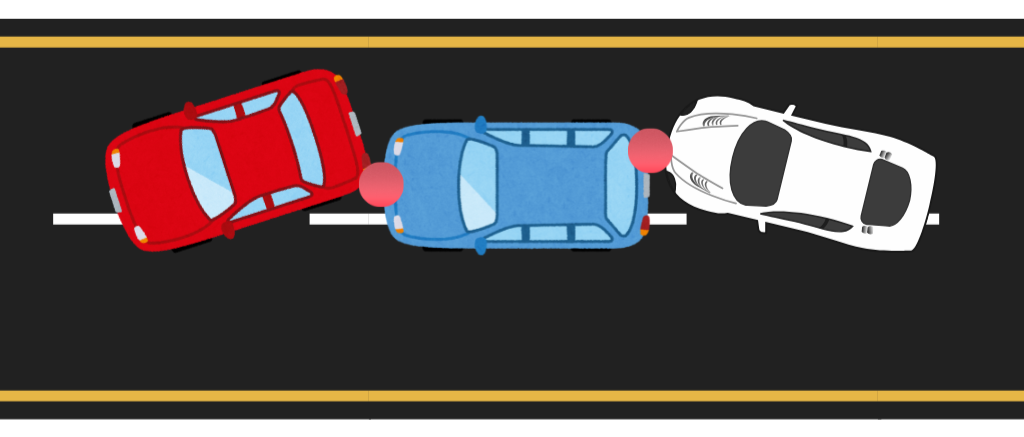Accidents happen (or will happen); but figuring out who’s responsible shouldn’t be a guessing game. In Canada, the fault determination rules of each jurisdiction are there to point the parties in a collision to the right direction.
In this article, we’ll discuss what these rules are and how they work. This guide can be used by lawyers who need a refresher on these rules, or for their clients as an educational piece.
What are the fault determination rules in Canada?
Fault determination rules are standards, based on law or an institution’s guidelines, that help parties find out who is at fault in a specific scenario. These are used in personal injury claims, especially those caused by motor vehicle accidents.
Recent Articles
These rules are important because knowing who is really at fault addresses the question of who must be liable to the injured victims. Insurance companies also won’t have to rely on vague or unwritten standards to determine liability.
In Canada, fault determination rules can be statutory, wherein the provinces and territories have enacted their own laws. Here are some examples:
-
Alberta: Direct Compensation for Property Damage Regulation (132/2021) under Alberta’s Insurance Act
-
British Columbia: Motor Vehicle Act (MVA) and guidelines of the Insurance Corporation of British Columbia (ICBC)
-
Manitoba: The Highway Traffic Act (HTA) as used by the Manitoba Public Insurance (MPI)
-
Ontario: Fault Determination Rules (R.R.O. 1990, Reg. 668) under Ontario’s Insurance Act
In this video, a personal injury lawyer provides tips on how to determine who is at fault in a car accident:
Our article on determining liability in personal injury cases explains more about fault determination after a car accident.
Factors in fault determination rules
The laws mentioned above are not exclusive, since there are other bases for the provincial or territorial fault determination rules. These include:
- common law, such as how the court interprets these rules
- provincial or territorial traffic and highway laws
- other guidelines from relevant government bodies
Applying traffic and highway laws
The area’s traffic and highway laws are complementary to these rules. This includes disobeying:
- a traffic enforcer who gives an order; or
- a traffic sign (e.g. prohibits overtaking)
For instance:
- when driver X rear-ends driver Y, driver X will be declared at fault (as discussed below)
- however, if driver Y is committing a driving offence or any other crime at the time of the rear-end collision, then driver Y is the one at fault
In other words, there still must be due regard for other laws when evaluating who is at fault in a collision.
No-fault and tort-based
On top of provincial and territorial fault determination rules is the factor of whether they follow a no-fault or a tort-based insurance regime. Insurers will use either, depending on the governing law.
In a no-fault insurance, the insurer will process the claim of the insured regardless of who is at fault. However, it doesn’t mean that the liable party is already off the hook. Independent of this payment to the insured, the insurer will start its investigation and determine who is at fault based on these rules.
Below are some of the benefits of a no-fault insurance:
- payment to the insured is guaranteed, pending investigation of the collision
- insured need not wait for a finished investigation to get their claim
- insured can immediately use the claim for property repairs and/or medical bills
On the other hand, a tort-based regime allows the injured party to sue the one who is at fault for the damages. These include damages for actual costs (e.g. to repair the vehicle, for medical costs) and pain-and-suffering damages.
In any case, it’s important to know what regime governs in your province or territory, which greatly affects how fault determination rules will apply.
How do fault determination rules work in car accidents in Canada?
After a car accident, it’s important to know the degree of fault of each driver involved in the collision. This means that one may be at fault 100 percent, where they will be solely responsible for the damage caused. It can also be that there’s contributory negligence on the part of the other driver/s, where the damages will be distributed according to their degree of fault.
All of these will depend on the rules that will specifically apply to that collision. While some may have a similar treatment, there are some jurisdictions that have different rules.
It would also be helpful to be familiar with the diagrams or sketches used by these laws, which show specific scenarios of collisions. We’ll show some of these diagrams below, along with the common rules.
Situation 1: Rear-end collision
Most fault determination rules would ascribe the fault to the rearmost driver in a rear-end collision. However, there are also instances where the rear-end collision is not the rear driver’s fault.

In this illustration, Blue Car is 100 percent liable for the collision, unless the exceptions apply.
Below are the fault determination rules of some provinces in a rear-end car accident:
-
British Columbia: the rearmost driver is 100 percent at fault for all the damage, if they’re the cause of the accident, and even if the vehicle they strike is pushed onto another vehicle
-
Manitoba: a driver who rear-ended a stopped vehicle is 100 percent at fault, even if the road is in a bad condition (e.g. the road was icy) since drivers must expect these conditions, according to the HTA and the MPI
-
Ontario: in a three vehicle rear-end collision, the rearmost driver is 100 percent at fault if the two frontmost vehicles are not moving; however, if the three vehicles are all moving, the liability is divided equally among them
Here’s a sample visuals of Ontario’s fault determination rules for rear end collisions:
For more details about these rules, reach out to the best personal injury lawyers in Canada as ranked by Lexpert.
Situation 2: T-bone collision
In T-bone collisions, the typical fault determination rules would provide for the following:
-
in violation of a red signal light: if driver X is speeding and T-bones driver Y, where driver X violated a red traffic light and driver Y is already in the middle of an intersection or a crossing for following a green light, then driver X is 100 percent at fault
-
if driver has changed lanes: where there are no traffic lights, if driver X and driver Y are driving from opposite directions, and driver X proceeds to the direction of driver Y, where driver Y continues in a straight path, then driver X is 100 percent at fault
-
when driver is overtaking or passing (intersection): if driver X is following driver Y on a single lane road, and driver X (intending to turn right in the intersection) overtakes driver Y, where driver Y is turning left in the intersection, then driver X is 75 percent at fault while driver Y is 25 percent at fault
-
when driver is overtaking or passing (not an intersection): if driver X is making a left turn into a private road or to their parking lot, where driver Y is passing on the left side of the road, then each driver is 50 percent at fault
Situation 3: Collisions involving multiple vehicles
In a pile-up, or when an accident involves multiple vehicles, the rule is that each driver is 50 percent at fault for the accident. This is a simpler way of doing it, rather than making a complicated computation. Although the insurer can go ahead with the complex route of finding specifically how much each driver should be liable for.

In this illustration, Cars Red, Blue, and White are 50 percent at fault each for the collision, absent any specific rule by a province or territory.
Situation 4: Backing up
Usually, the driver who is backing up is the one at fault when they collide with another vehicle or when they crash into other objects. This is because visibility is limited when a driver is backing up, making it difficult to see obstacles around them. The rule applies whether the driver is backing out of a driveway or of a parking spot.
Situation 5: Making a U-turn
Just like when backing up, the driver is 100 percent at fault when the accident occurs because they’re making a U-turn. This rule is especially true in circumstances when doing a U-turn is not allowed, or even if it’s allowed it’s still risky or has a high chance of accident.
Situation 6: Entering or merging on a highway; changing lanes
Whether a driver is entering or merging on a highway, a common practice is that they must yield to those who are already on the highway. So, when a collision happens between them, the driver who is entering or merging will be 100 percent at fault.
Situation 7: Immobile vehicles (parked car; opened door)
When vehicles that are not moving are bumped by another vehicle — whether in a T-bone, in front, or from behind — it is the moving vehicle that is 100 percent at fault for the collision.
The following are some other rules:
-
parked car: the driver who hit the parked car will be 100 percent at fault, unless the car that was crashed into is parked illegally
-
opening a car door: the driver or passenger who opened the car’s door, or left it open, is 100 percent at fault if an accident occurs, unless it’s done in a reasonably safe manner (depending on the case) and if it’s not a hazard to moving traffic
Situation 8: Involving pedestrians or cyclists
Motor vehicle drivers must be diligent enough to ensure that no pedestrians and cyclists are hit. A vehicle is 100 percent at fault if:
- it hits a pedestrian or a cyclist, when it's the one passing or overtaking
- it is exiting a parking lot, and it hits a pedestrian or a cyclist
These situations are applicable only if the pedestrian or a cyclist is in the right lane or has the right of way. Below are some exceptions, where the pedestrian or cyclist is 100 percent at fault:
- if a cyclist is riding against the direction of traffic
- if a pedestrian is crossing not in a crosswalk
What are the pieces of evidence used in fault determination rules?
Although fault determination rules may differ in each province or territory, there are still similarities. One of these are the pieces of evidence used when applying these rules.
Here are some examples of the evidence used during a fault determination investigation:
- police reports
- accounts from witness
- driver's own evidence (e.g. dash cam recordings, pictures)
As such, it’s also important that drivers (who most probably are future clients of lawyers) must know what to do after a car accident. Eventually, their immediate actions when a collision happens will be evidence for or against them under these fault determination rules.
Fault determination rules: fairness in accidents
Understanding the fault determination rules under Canadian laws is essential for both drivers and lawyers. This helps them ensure a fair and correct assessment of liability after a car accident. By being aware of these rules and the evidence needed, individuals will know what to do after a collision with confidence and clarity, making the process of finding fault much less of a guessing game.
To learn about your area’s fault determination rules, consult any of the Lexpert-ranked best personal injury law firms in Canada.





